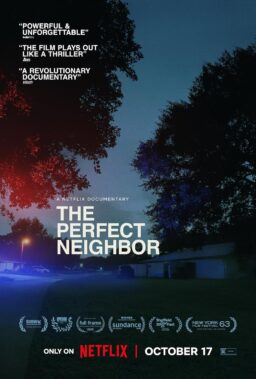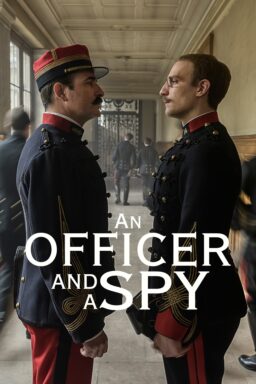In his introduction to “Who the Devil Made It,” a rich collection of his interviews with 16 great Hollywood directors, Peter Bogdanovich remembers Orson Welles saying, “You told me about all these old directors whom people in Hollywood say are ‘over the hill,’ and it made me so sick, I couldn’t sleep.”
It is a mark of his humanity that Bogdanovich–even in his glory years in the 1970s when “The Last Picture Show” won eight Oscar nominations and “What’s Up Doc” was a blockbuster–cared passionately about those “old directors,” and was sometimes the only active industry figure who still sought them out.
This is a massive and valuable book, a collection of interviews that Bogdanovich has conducted since 1960 with directors who witnessed the creation of an art form. For many, it was their last chance to leave a record: Leo McCarey was dying of emphysema, Raoul Walsh and Fritz Lang were blind, Alfred Hitchcock at the end was drinking heavily. Bogdanovich includes everything: History, technique, gossip, minutiae. Like “This Is Orson Welles” (1992), his conversations with Welles, this book is a form of autobiography; we’re reminded of the card file he kept from ages 12 to 30, recording 3,661 films, 1,066 of them seen at least twice.
The movies are so young that until recently their origins were held in living memory. Allan Dwan (1885-1981), the oldest of the directors here, invented the mercury vapor lamps that replaced klieg lights and their clouds of carbon dust.
He recalls filming while hiding from the posses of the Patents Company. “They sent snipers out with long-range rifles,” Dwan told Bogdanovich, but nobody ever got killed: “They always shot at the cameras.”
Bogdanovich’s other subjects also made history. Fritz Lang: “Did you know that I invented the countdown?…When I shot the takeoff, I said, “If I count 1, 2, 3, 4…an audience doesn’t know when it will go off. But if I count down …5, 4, 3, 2, 1, ZERO–then they will know.”
And here is Leo McCarey, who directed 100 Laurel and Hardy pictures, responding to Bogdanovich’s suggestion that he was instrumental in shaping their personas: “I feel I had a lot to do with it, but modesty prevents me from saying that I gave them their breath and blood.” Josef von Sternberg has no modesty at all: “Miss Dietrich is me. I am Miss Dietrich.”
In the book’s most bizarre story, Leo McCarey tells of piecing together an ending for “My Son John,” his 1952 anti-communist melodrama, after the star died. Robert Walker suggested they tape-record a big speech, and died over the weekend. The recording allowed McCarey to finish the picture, by having the Walker character tell the FBI “he was coming over with a confession that he had recorded…”
Then McCarey wrote a death scene, and asked Alfred Hitchcock for help. Hitchcock recalled Walker’s death scene in “Strangers on a Train” (1951), and found a shot of Walker and Farley Granger under a merry-go-round. There was a piece of film showing Walker dead; McCarey removed the merry-go-round and matted the shot into the wreckage of a taxicab.
The movie, he cheerfully recalled, won an Oscar nomination for best screenplay.
Performers in the earliest days were mostly actors who had failed elsewhere. “No self-respecting actor would come near us at first,” Dwan remembered. But the movies quickly made actors into stars. “You realize the greatest stars in the picture business were made during an era when they didn’t have one single thing to say about what they did,” Howard Hawks tells Bogdanovich.
Hitchcock famously storyboarded every scene without consulting his actors: “I didn’t enjoy working with Montgomery Clift because he was too obscure in his methods….I asked him to look up, so that I could cut to his point of view of the building across the street. He said, ‘I don’t know if I would look up.’ Well, imagine.” Joseph H. Lewis, on the other hand, never blocked a scene: “…If I did this, I would immediately stop [an actress] from giving me what she had thought about in her mental dark closet at home.”
The book includes first-person accounts of famous Hollywood anecdotes. Raoul Walsh tells of stealing John Barrymore’s body from a morgue and leaving it for a drunken Errol Flynn to discover on his couch. With an empty eye socket of his own, Walsh had little sympathy for John Ford’s complaints about his own bad eye: “I picked up my fork and I says, ‘Well, come on, Jack, let me pop it out for you and then you’ll be OK.”
And Hawks was an eyewitnesses to the famous meeting of Clark Gable and William Faulkner, on a hunting trip. Gable asked Faulkner to name his favorite authors. Faulkner included himself. “Gable said, ‘Oh, do you write, Mr. Faulkner?’ And Bill said, ‘Yes. And what do you do, Mr. Gable?'”
Hawks, the architect of some of the greatest screen personas, remembers telling Humphrey Bogart his ideas for an unknown model named Lauren Bacall: “We are going to try an interesting thing. You are about the most insolent man on the screen and I’m going to make the girl a little more insolent than you are.”
Of Jane Russell and Marilyn Monroe, he says flatly, “Neither of them were very sexy in real life…Monroe couldn’t get anybody to take her out– nobody . A funny little agent about five-feet-two used to cart her around.”
But George Cukor, who worked happily within the studio system for many years and seemed to accept its mysteries more easily than others, understood Monroe’s appeal. Talking about censorship, he says, “I’ll tell you what they cannot- censor: Thought…. And that’s what I think of all of the great ones: I mean Elvis Presley–whom I consider great–and Marilyn Monroe; their brains were uncensored. They could imagine all kinds of things and there was nothing immoral about it.”
Some of the most harrowing stories in the book involve great movies that were nearly ruined. Hitchcock on David O. Selznick’s idea for the last shot in “Rebecca”: “…he wanted the house to go up in flames, and for the smoke to form the letter ‘R!'”
And Otto Preminger recalls how Darryl F. Zanuck took “Laura” away from him, gave it back, reshot the ending, and finally restored it.
Many readers will not have heard of a lot of the films discussed, but the stories stand on their own. They are an oral history of an art form created out of pragmatism, experimentation, instinct and luck. Lurking beneath was the soul of the individual filmmaker. “I liked almost anybody,” Hawks told Bogdanovich, “that made you realize who in the devil was making the picture.”











